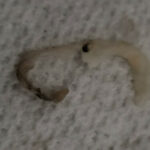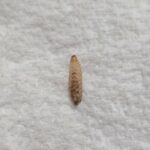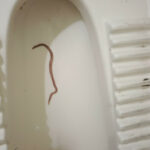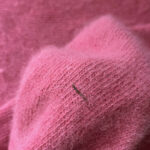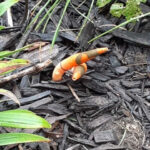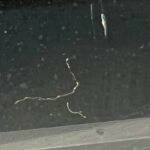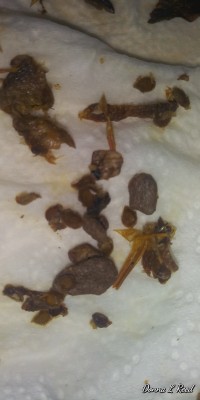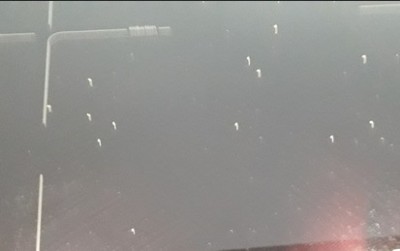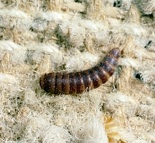When you see a beautifully marked moth fluttering around the laundry or in the pantry, you have probably spotted the Indianmeal, or Indian meal, moth. Even worse, you may have seen “inch worms” and their telltale webbing in cereal and cornmeal. These are not true worms, but are the damaging larvae that are well on their way to becoming harmless adults.
Indianmeal moths are notorious pantry invaders. They are among the most common and are difficult to eradicate. As adults, they lay eggs in crevices, especially in the folded edges of packaged goods or directly in food. When the egg hatches, the worm-like larva emerges. If there is plenty of food in the pantry, the larva stage can last several months. During this time, the “worms” will work their way through dog food, any grain products, dried fruits, and birdseed. Other favored goodies include chocolate, powdered milk, pasta, crackers, nuts, and spices. A trail of webbing may be the first signs of an infestation and, often, the larvae are seen inching along.
The silky web of the Indianmeal moth “worms” is not a pleasant sight and can be filled with the larval fecal matter, known as frass, as well as skin castings and egg remnants. When the larvae are ready to fledge, they cease eating and head for walls and ceilings. Here, they spin a cocoon from which the adults will emerge and begin the cycle again.
These pests are not only found in home pantries, but are also monumental nuisances in grocery stores, manufacturing plants, and restaurants. It is the Indianmeal adults that typically hitch a ride from these destinations to your home.
Ridding a pantry of the worm-like larvae is a dedicated task. Remove and inspect all susceptible foods. Immediately seal and discard any packages with visible signs of webbing and worms. If in doubt, you can also freeze many products at 0º F. for four days. As an alternative, some foods can be heated for one hour at a temperature of 140º F. in the oven. These methods will kill unseen or potential eggs and larvae.
Thoroughly clean pantry shelves with disinfectant. Vacuum all cracks and crevices in shelving as well as behind appliances. Allow to dry thoroughly. Purchase containers for all dried goods. These can be glass, metal, or solid plastic; flexible bags will not prevent an infestation of Indianmeal moths, the “worms,” or any other pantry pest. Chemicals and insecticides are typically not safe around food and are very rarely effective. Successful elimination is through removal of the source, including Indianmeal moth adults plus all eggs and larvae.
Other pantry pests that produce worm-like larvae include the Mediterranean flour moth and the meal moth.
All About Worms is always free, always reader-supported. Your tips via CashApp, Venmo, or Paypal are appreciated! Receipts will come from ISIPP Publishing.




